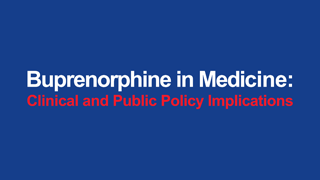A randomized trial of one-day vs. three-day buprénorphine inpatient detoxification protocols for heroin dependence
DOI:
https://doi.org/10.5055/jom.2005.0009Keywords:
buprenorphine, detoxification, withdrawal, opioid, heroinAbstract
Detoxification from opioids remains an important first step in the treatment of many patients with opioid dependence. Several pharmacologic regimens have been used for opioid detoxification. In the United States, the partial p-opioid agonist, buprenorphine (BUP) is the most recently approved pharmacotherapy for opioid detoxification and replacement. The literature in recent years has described detoxification protocols using a single high dose of BUP and a three-day BUP regimen. In many settings, such as drug-free programs, a single-dose detoxification protocol would be of significant benefit. There have been no prior studies comparing one-day and three-day BUP-assisted opioid withdrawal.
In this pilot study, we conducted an open-label, randomized trial of one-day vs. three-day BUP/naloxone sublingual tablet-assisted opioid withdrawal. Twenty patients from a therapeutic community treatment program were randomly assigned to receive either 32 mg sublingual BUP over one hour (one-day group), or 32 mg sublingual BUP over three days (three-day group). Nine of 10 subjects (90percent) in each group completed seven days in the detoxification protocol. There was no statistically significant difference between the two groups in all other outcome variables, including retention in the treatment program, intensity of withdrawal signs and symptoms, amounts of adjunct medications used, and ability to produce opiate-free urine. This study further validates the feasibility of the single high dose of BUP as a rapid detoxification method.
References
National Institute on Drug Abuse: Heroin. National Institute on Drug Abuse Web site. Available at www.drugabuse.gov/Infofax/heroin.html. Accessed October 10, 2004.
Krantz MJ, Mehler PS: Treating opioid dependence: Growing implications for primary care. Arch Intern Med. 2004; 164(3): 277-288.
Cheskin LJ, Fudala PJ, Johnson RE: A controlled comparison of buprenorphine and clonidine for acute detoxification from opioids. Drug Alcohol Depend. 1994; 36(2): 115-121.
O’Connor PG, Carroll KM, Shi JM, et al.: Three methods of opioid detoxification in a primary care setting: A randomized trial. Ann Intern Med. 1997; 127(7): 526-530.
DiPaula BA, Schwartz R, Montoya ID, et al.: Heroin detoxification with buprenorphine on an inpatient psychiatric unit. J Subst Abuse Treat. 2002; 23(3): 163-169.
Gandhi DH, Jaffe JH, McNary S, et al.: Short-term outcomes after brief ambulatory opioid detoxification with buprenorphine in young heroin users. Addiction. 2003; 98(4): 453-462.
Kutz I, Reznik V: Heroin detoxification with a single high dose of buprenorphine. IsrJPsychiatryRelat Sci. 2002; 39(2): 113-119.
Kutz I, Reznik V: Rapid heroin detoxification using a single high dose of buprenorphine. J Psychoactive Drugs. 2001; 33(2): 191-193.
Assadi SM, Hafezi M, Mokri A, et al.: Opioid detoxification using high doses of buprenorphine in 24 hours: A randomized, double blind, controlled clinical trial. J Subst Abuse Treat. 2004; 27(1): 75-82.
Schuh KJ, Johanson CE: Pharmacokinetic comparison of the buprenorphine sublingual liquid and tablet. Drug Alcohol Depend. 1999; 56(1): 55-60.
Downloads
Published
How to Cite
Issue
Section
License
Copyright 2005-2025, Weston Medical Publishing, LLC and Journal of Opioid Management. All Rights Reserved.










